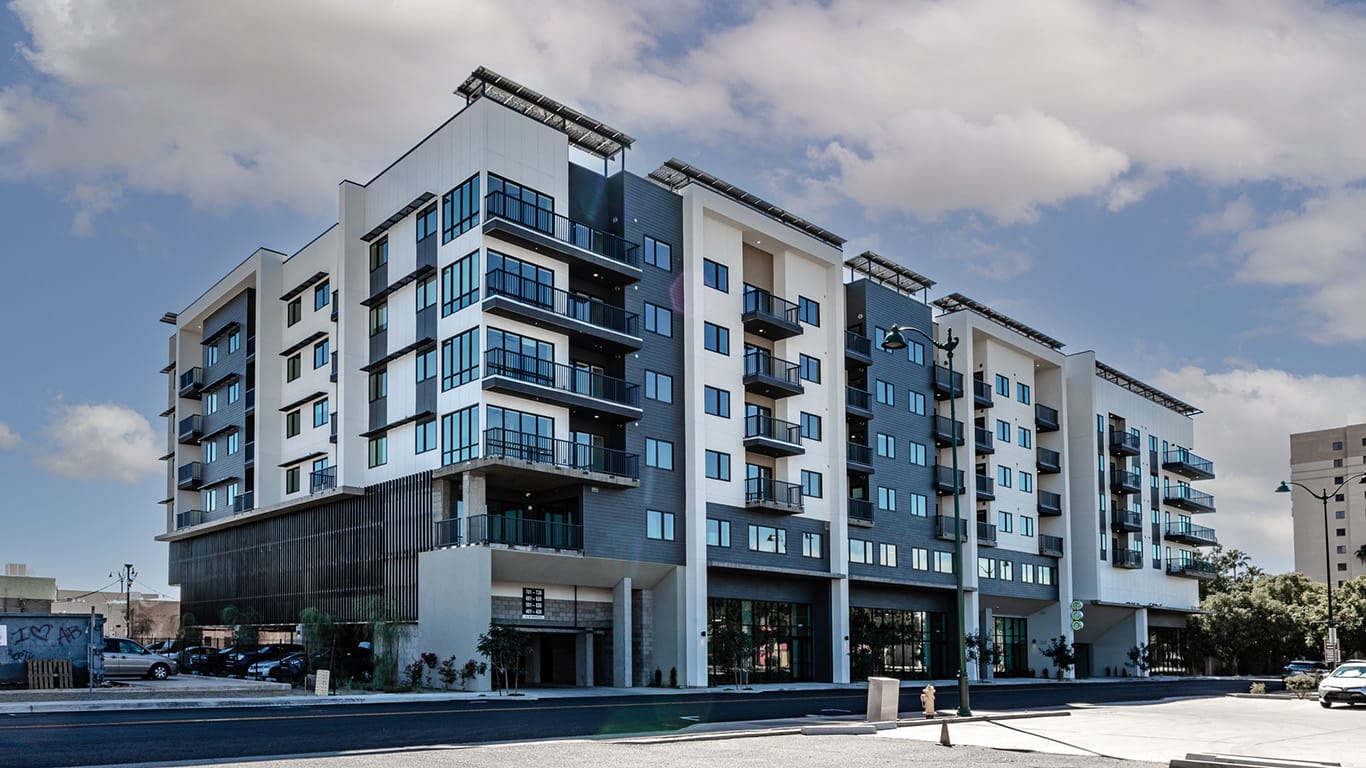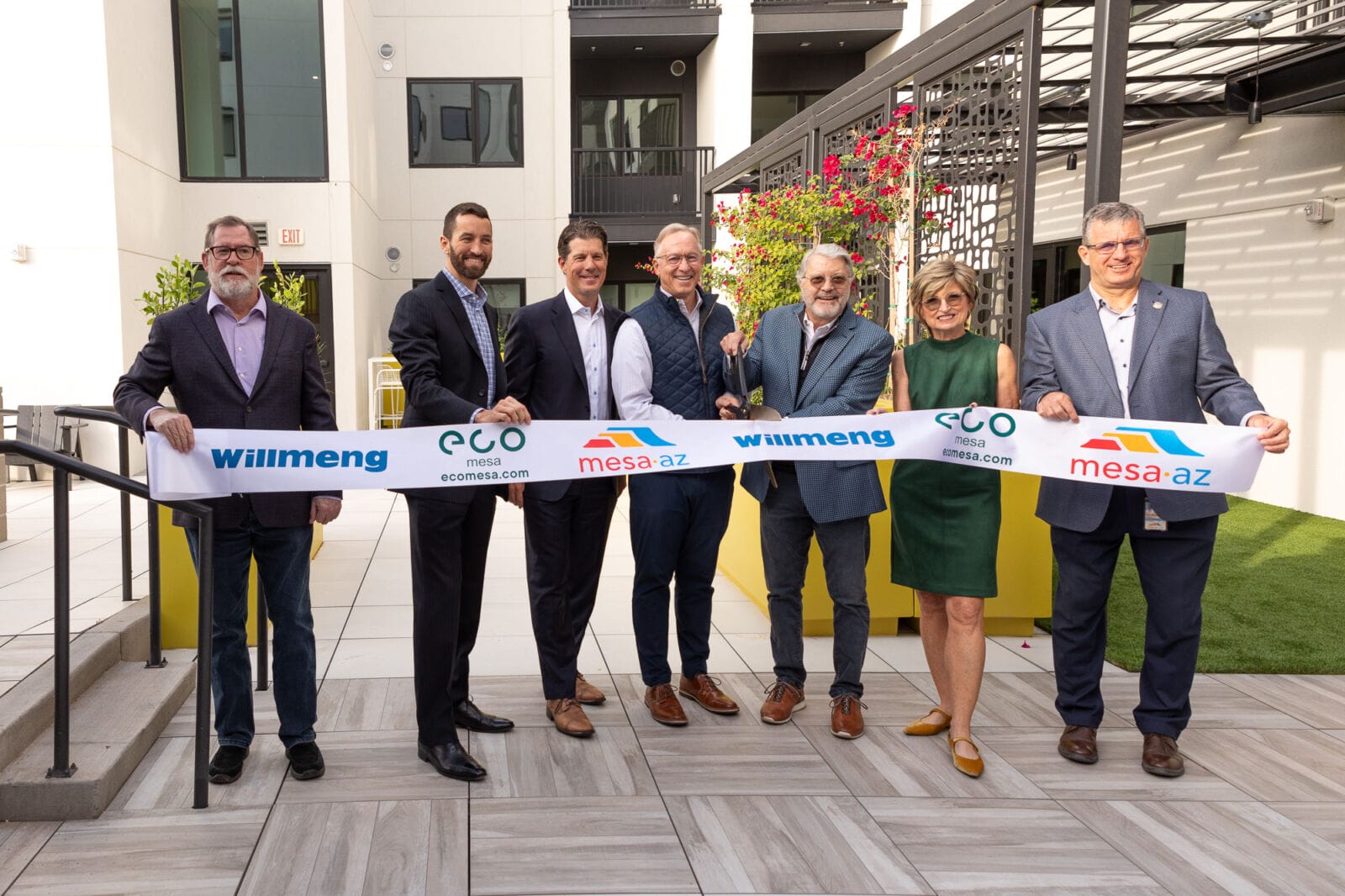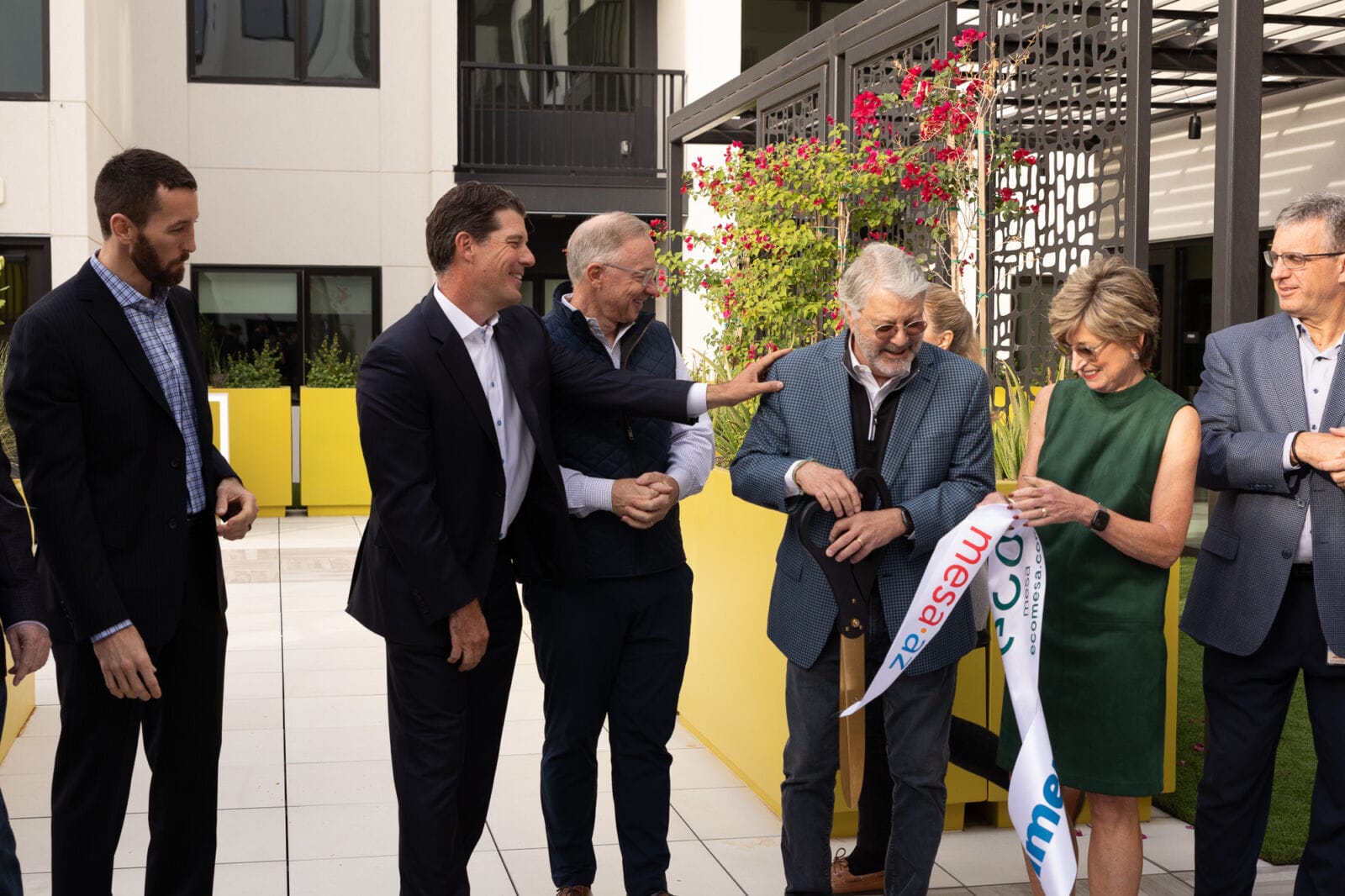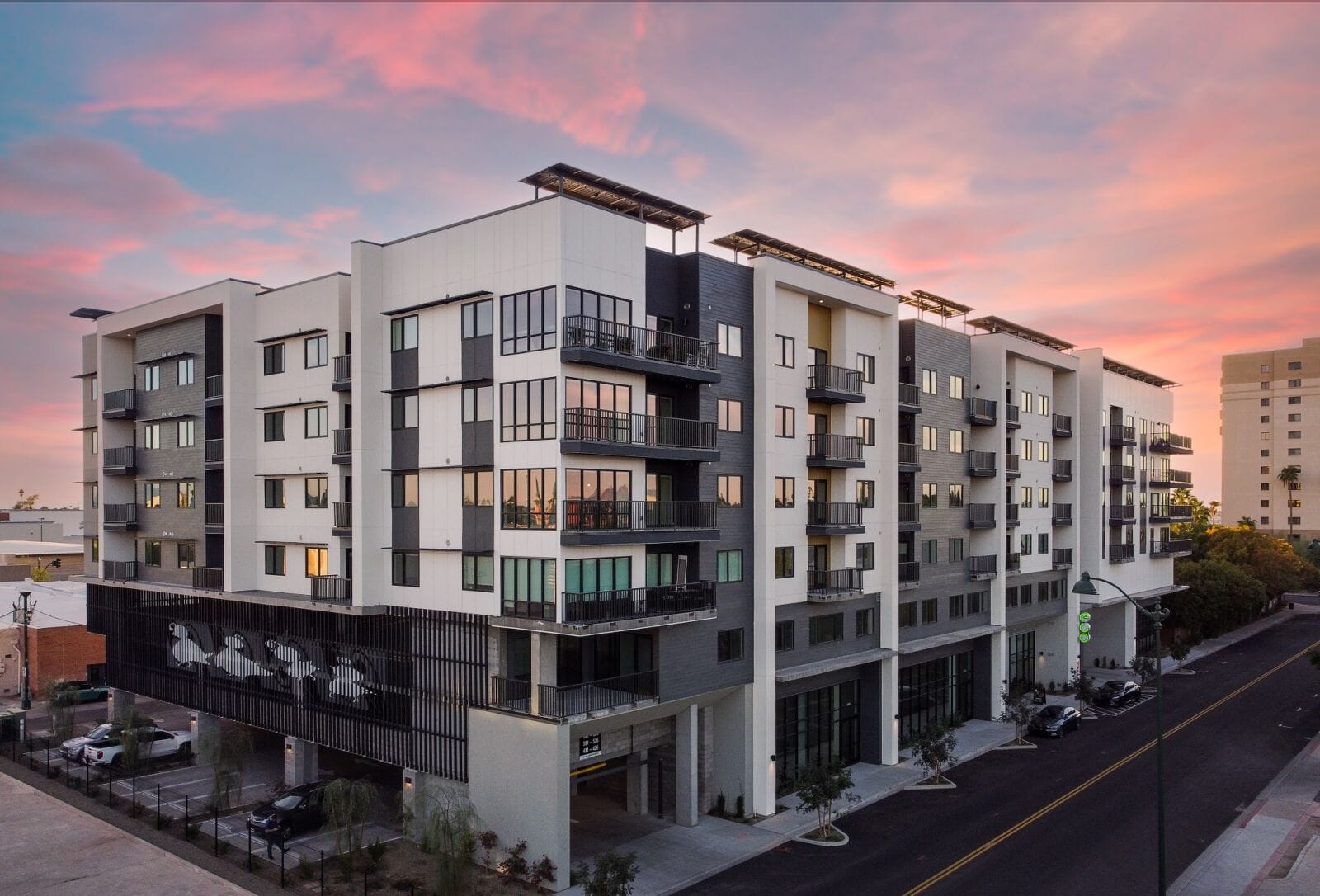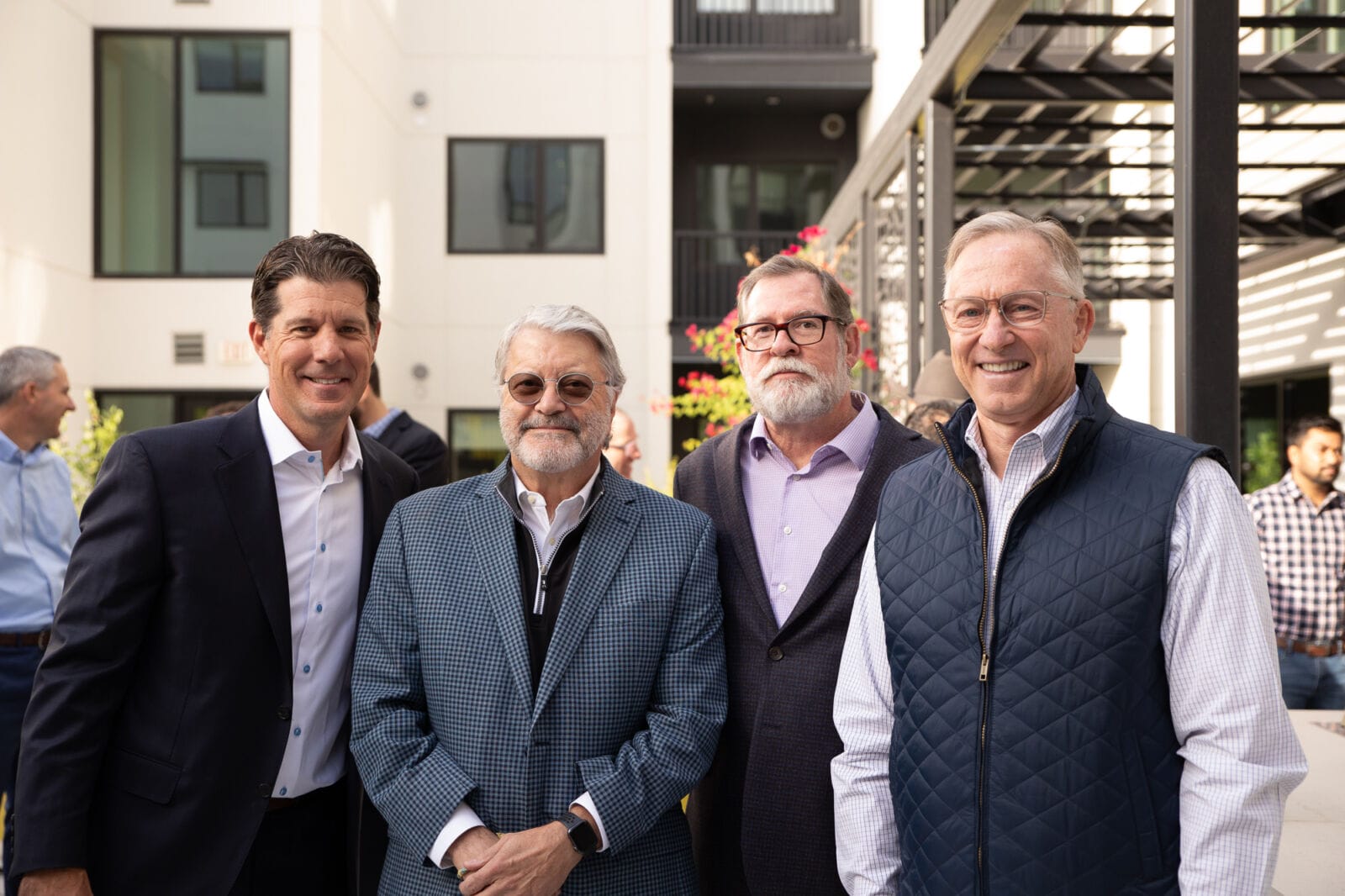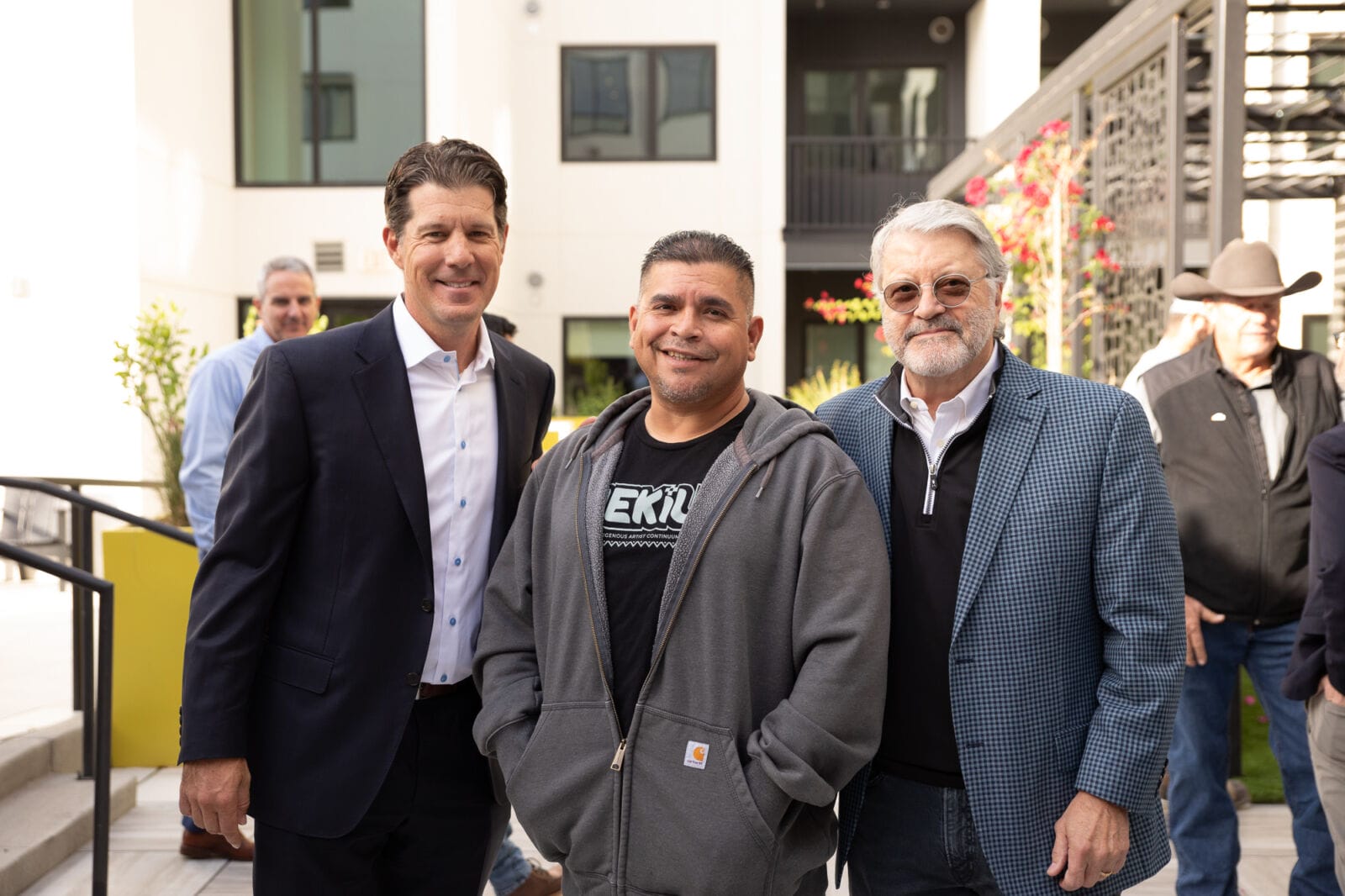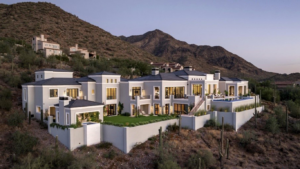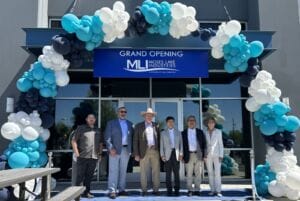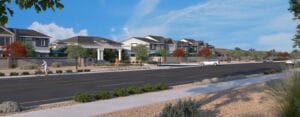The completion of one of the most energy efficient multifamily projects in the state was celebrated with a ribbon cutting ceremony recently. ECO MESA apartments transformed a small, infill parcel of land in Downtown Mesa into a community that boasts some of the most sustainable features in the industry. ECO MESA was developed by Habitat Metro and Willmeng Construction was tasked with delivering the project, which was designed by CCBG Architects.
MORE MESA NEWS: Take a look inside the most expensive house sold in Mesa
The seven-story building spans 179,227 square feet and accommodates 102 residential units, including studio, one-bedroom, and two-bedroom apartments. What was once a parking lot at 127 W. Pepper Place, ECO MESA is located in the heart of Downtown Mesa surrounded by museums, store fronts and a busy light rail thoroughfare. The community was built with a number of features that result in a high performance building, while reducing energy consumption. Key among those are the 405 solar panels that top the building, an efficient exterior shell system that results in better insulation and a more air-tight seal; and energy-efficient appliances in each apartment.
“Five to six years ago, Mesa held a lot of empty storefronts, and this is the best transformation story in the Valley,” said CCBG Architects Managing Partner Brian Cassidy. “ECO MESA is a great testament for how we can take underperforming parking lots and make something exceptional out of it and I’m very proud to be a part of it.”
This highly efficient, sustainable project was the vision of Habitat Metro, which set out to create a purposeful, environmentally conscientious community in an area that is rapidly evolving into another urban center in the Valley.
“We had an idea in mind and we needed the right team to make it a reality, and the City of Mesa was a tremendous partner for us and we are grateful for their support all along the way,” said Habitat Metro Co-Founder Tim Sprague. “Our choice to collaborate with CCBG on the design and Willmeng on the delivery were obviously the right ones, considering the way this community has turned out. We couldn’t have picked a better team.”
Sprague described the City of Mesa as being the action-oriented city government needed to take on the project and expressed his gratitude towards various city boards and board members, specifically the Mesa’s Downtown Transformation Department.
“Someone has to be first, and this sets the stage for something that is going to continue in downtown Mesa,” said Mesa Mayor John Giles. “Projects like this can really bring back the quality of life and the character that has been lacking for a few decades.”
For Willmeng, ECO MESA was its first opportunity to work on a sustainable multifamily project and one that came with some unique challenges. The “postage stamp” site is situated between a wedding venue, museum and a coffee shop and the Willmeng team had to come up with some creative solutions to issues including materials storage, parking and even the placement of the tower crane. Willmeng completed the project while maintaining open streets, continual light rail operations, and minimal disturbances for the nearby businesses in Downtown Mesa.
“Most developers will look at this concept and say it is not possible… But we stand here today as a testament that we can, and we will continue to, and we did with ECO MESA and all its amenities…being a true industry-leading project,” said Willmeng CEO James Murphy.
In addition to its sustainable features, ECO MESA comes with a full amenity package, including a 14,000-gallon heated swimming pool, a fully equipped lounge with a kitchen, a game room, a water-vapor fireplace, along with various indoor/outdoor seating areas. The sky deck features outdoor barbecue areas conveniently located next to the well-equipped fitness center.
With a core element to downtown Mesa being artwork, ECO MESA also contains multiple pieces of art but most notably being a large piece alongside the exterior east-side wall, by Jacob Butler, a celebrated artist belonging to the Salt River Maricopa Native American Community. The art depicts a family of four quail, known for their community-oriented nature, and is titled “Family Ties.” Butler has art displayed several places throughout the valley, contained in national monuments, and the Smithsonian. Butler comments, “To me it was fitting that I was doing a piece for ECO MESA because I know they are representing sustainability in a contemporary way… it was a perfect fit.”

